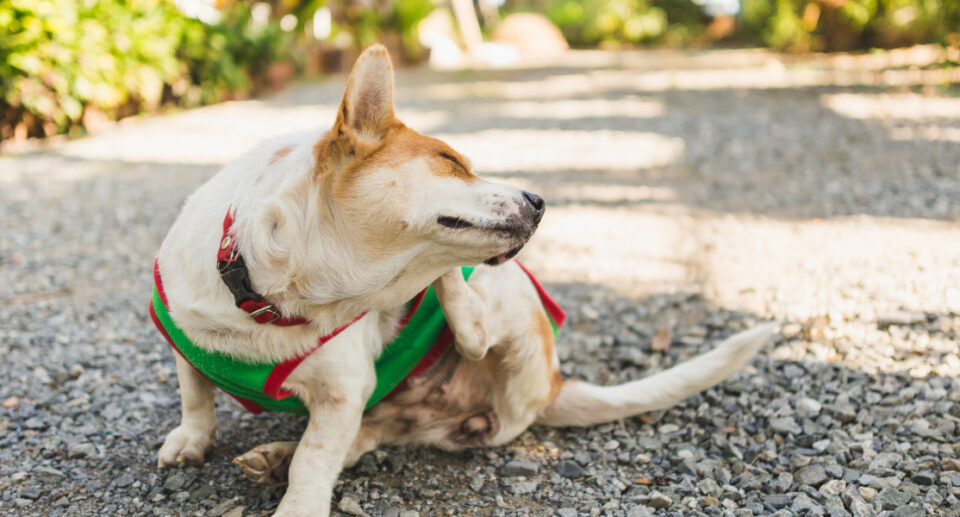Managing Your Dog’s Skin Allergies

Skin allergies are common in dogs. The major causes of dog allergies include fleas, inhalant/contact (environmental) allergies, and food allergies. Signs that your dog has allergies include itching, face rubbing, and paw licking. Over time, crusting, scabbing, sores, and bleeding may occur. Yeast or bacterial infections are also common in allergic dogs. Many dogs with chronic ear infections also suffer from underlying allergies.
Your dog’s history and a physical examination often provide clues for what is causing the skin allergies. If the itching is concentrated on the lower half of your dog’s body, including near the tail, lower legs, and groin, then fleas are often the cause. Thorough examination of your dog’s hair, including flea combing will often diagnose flea bite allergies. Seasonal itching, especially if the areas involved are your dog’s feet, face, and ears often suggests inhalant/contact allergies. Diagnosis is made by blood and/or skin testing. If skin itching is present year round, and is less responsive to cortisone or antihistamines, then food allergies are possible. In this case, feed a restricted protein diet for a minimum of 6-8 weeks to see if food allergies are present.
Hydrocortisone
Hydrocortisone is often quite helpful in symptomatically managing inhalant/contact allergies in pets. The drug acts by decreasing inflammation, redness, swelling, and the urge to itch. While oral hydrocortisone may cause some dogs to have side effects such as increased thirst and urination, topical hydrocortisone is often quite helpful without the side effects.
Antihistamines
Antihistamines may be helpful in up to 30% of dogs with inhalant/contact allergies (or environmental allergies). When combined with fatty acids, this percentage may go up to 50%. Antihistamines such as Diphenhydramine (Generic Benadryl), Chlorphenirimine 4 mg and Hydroxyzine HCl (Atarax) are most effective in helping to manage your dog’s environmental allergies. In many cases, it is necessary to try one antihistamine at a time for a 7-10 day trial until one is found that helps alleviate clinical symptoms.
Fatty acids
Supplementing your dog’s diet with Omega 3 fatty acids can be quite helpful in reducing the skin inflammation caused by inhalant/contact allergies, and to a lesser extent, relieving symptoms in dogs suffering from flea or food allergies. It is important to recognize, however, that it often takes up to a few months of continuously giving your dog Omega 3 fatty acids to see measurable benefits in allergy reduction. It is also important to realize that not all fatty acid supplements are created equal. Some recommended fatty acid products include Be Well for Dogs, Nordic Naturals Omega-3 Pet, and The Missing Link Ultimate Skin & Coat.





